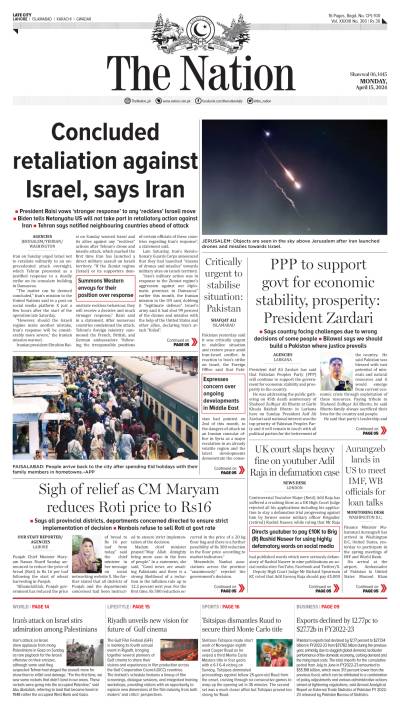SATTAR ALVI - Whether a country is a superpower or a superpower in the making or an emerging power, is largely a question of definition and subjective judgment. India is a multi-faceted society and has contradictory trends and developments. Not withstanding that, what is certain is that India is rising to play significant role in the future global affairs. It has had extraordinary economic growth and is making a staggering investment in the armed forces. In spite of these two critical assets, India is far away from being a global military actor with serious power projections. As of now, its ambitions rest on economic, cultural and political factors only. That is not what the Indian leadership is going to be content with.
India aspires to be recognized as an economic and military power of some reckoning, with a permanent membership of the UN Security Council. To achieve these objectives, India needs to ensure a peaceful internal environment, security from external threats and capability to project power in the greater South Asian region. Such an aspiration requires India to modernize its defence forces and equip them with contemporary military equipment to meet the expanded roles they would need to perform, while ensuring sustained economic growth and development. And indeed nobody has the right to deny them these aspirations. But that is not the end of the story. India can have all the wishes and the aspirations and do whatever it wants, but like somebody has said “your freedom ends where my nose begins”. Unfortunately, there are far too many noses in very close vicinity of the new-found freedom that India wants to exercise.
A comprehensive review of India’s military doctrine yields India’s military expansion plans. India is refashioning its armed forces to attain global reach. The litmus test for imperialistic designs include, a desire for international military bases, the need to include aircraft carriers in its fleet, naval expansion, the acquisition of air to air refueling tankers, etc. And we are not yet talking of the nuclear capabilities. These are means of exhibiting long-range force, show of might and hegemonistic aspirations. The Indian defence budget is set to hit a record high of $40b. That compares with a basic and Pakistani military budget of roughly $7b. Moreover, a good chunk of the Indian military budget has been set aside for capital acquisitions, ostensibly to try and keep up with rapid Chinese military expansion – though the security establishment here would believe that many of the items on the Indian military wish list are there with an intention of increasing its war capabilities against Pakistan.
The Pakistani security establishment is right to closely track Indian defence spending because India remains, in terms of its military capabilities, the principal threat to Pakistan’s security. But a rational, logical perspective is really what is needed rather than the wild conjecturing in some hawkish quarters. Although India and Pakistan will deny it, an arms race is on. India wants to become a regional power, and is building its arsenal accordingly, while Pakistan wants to maintain a rough parity for survival in the event of another conflict. For Pakistan, the thought of the Indian military pulling out of sight in conventional terms can be an uncomfortable – possibly, unacceptable one.
In ideological terms, China wants peace and stability in South Asia, but that is only possible if the imbalance created by the US’s extraordinary support to India is to some extent corrected. There are two aspects here that are particularly worth bearing in mind. Consider that while the Indian defence budget is set to cross $40b, the Chinese defence budget is roughly four times larger. India also has to compete for control in the Indian Ocean, a formidably expensive proposition. Moreover, the Indian military’s modernization project has come after years of under-investment – so the punch it can pack may not be as big as the $40b figure suggests.
For India, there should be a realization that goes beyond the plain numbers: the further away it pulls from Pakistan in the conventional field, the more it will create pressure on Pakistan to perhaps lower the nuclear threshold to stave off the threat of conflict. Simply, much as some in India would like to separate the question of competing with China from the need to manage risk with Pakistan, the overall Indian military capability will send a message in both directions. Stability will only come from advancing dialogue with Pakistan and that means solving of all thorny issues.
A former PAF fighter pilot, the writer, a retired air commodore, is a recipient of decorations, Pakistan SJ,SI(M), Foreign-HJ, SJ.
Monday, April 15, 2024
What India wants in next 20 years?

8:05 AM | April 15, 2024
Pakistan to take on New Zealand in first T20I on Thursday
5:45 PM | April 15, 2024
Rains likely to hamper Pakistan, New Zealand T20 series
5:44 PM | April 15, 2024
Mexico sounds alarm over 'zombie drug' sedative in opioids
5:43 PM | April 15, 2024
Woman beaten up by policeman in train found dead
5:41 PM | April 15, 2024
Fuel prices hike upto Rs8.50 likely
5:40 PM | April 15, 2024
Policing Reforms
April 15, 2024
Storm Safety
April 15, 2024
Deterrence Restored
April 15, 2024
IMF Challenges
April 14, 2024
Security Crisis
April 14, 2024
Suicide awareness
April 15, 2024
Biden’s dilemma
April 15, 2024
Over dependence on technology
April 14, 2024
Education reform call
April 14, 2024
Brain drain
April 14, 2024
ePaper - Nawaiwaqt
Advertisement
Nawaiwaqt Group | Copyright © 2024





